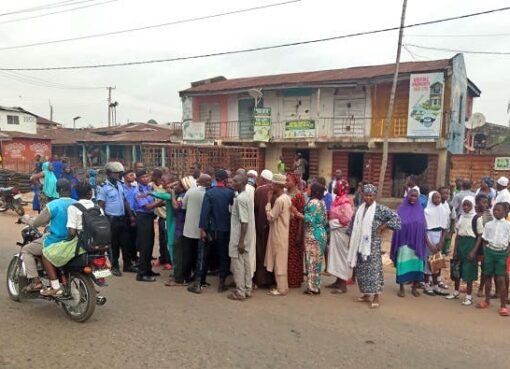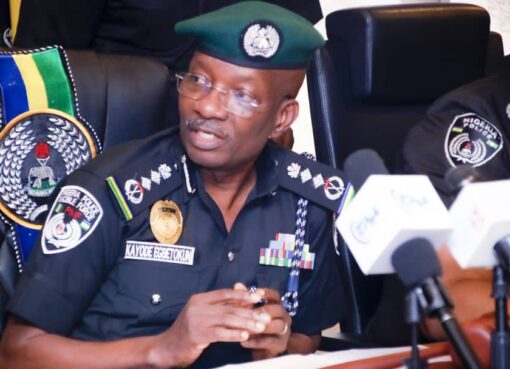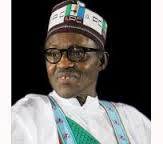Barely one week after the apex court quashed the election that brought in Emeka Ihedioha of the Peoples Democratic Party, PDP, and declared Hope Uzodinma of the All Progressives Congress, APC, the winner of the 9, March 2019, Imo Gubernatorial election, the bigheads of the opposition party, today marched to the various streets in Abuja protesting, insisting that the Supreme Court judgment should be reversed.
Recall that on the 17th of this Month, PDP through its National Secretary Kola Ologbondiyan told APC that the party would never get away with Imo.
In a bid to achieve that, the party lambasted APC and those in favor of the judgment. PDP however, threw about ten questions at Justice Tanko’s led judges that gave verdict on Imo governorship election.
Below are the questions which PDP patiently waits for the answers:
The questions Justice Tanko’s Supreme Court must answer are:
The Supreme Court, in a host of cases, the latest and most celebrated being Atiku V Buhari & Ors, consistently decided that for a petitioner to succeed in an allegation of infraction of any provision of the Electoral Act especially one complaining about malpractice, as in this case, wrongful exclusion of votes, the petitioner must call witnesses polling unit by polling unit.
The question is, how many witnesses did Uzodinma/APC call from the 388 polling units from where the Supreme Court allocated votes to him.
The so called results from the 388 Polling units were rightfully rejected, in line with several decisions of the Supreme Court, by the Tribunal and Court of Appeal as it was merely dumped on the tribunal in a Ghana Must Go bag, by a policeman who had no mandate of the police to testify at the Tribunal.
The Tribunal did not even open the Ghana Must Go bags as there was no basis to do so. It is one of the great wonders of the world how the Supreme Court opened the bag, counted the results and added them to only the APC Candidate.
What is more perplexing is the fact that INEC produced a schedule of reasons why results were not produced from the 388 units.
Indeed election did not even take place in most of the units for one reason or another, like violence, etc and so no result could possibly be obtained from those units. The results were not merely rejected or cancelled by INEC.

None of the candidates or their Counsel, except perhaps APC, as we speak, are aware of the number of votes scored by each party from the 388 polling units. The Tribunal or Court of Appeal did not mention or ascribe any figure from the units to any party in their decisions.
In fact, in the cross examination of the APC Candidate, Sen. Hope Uzodinma, he could not read any figure from the “Oluwole” results. He said that the figures were not clear. And so it beats our imagination where the Supreme Court conjured and manufactured the figures it used in declaring Uzodinma/APC as duly elected.
But the law is settled as decided by the same Supreme Court in Buhari v. INEC (2008); that “weight can hardly be attached to a document tendered in evidence by a witness who cannot or is not in a position to answer questions on the document. One of such persons the law identifies is the one who did not make the document. Such a person is adjudged in the eyes of the law as ignorant of the content of the document”.
- Does the Supreme Court have powers to formulate and allocate votes as election results?
- Were the said results certified by INEC as required by law?
- Did Hope Uzodinma call 388 witnesses from the 388 polling units to speak to the results to obviate the principle of dumping which the Supreme Court used against the PDP and her candidate, Atiku Abubarka, in the last Presidential Appeal.
- Were the presiding officers and or party agents of the 388 polling units called to testify by Uzodinma/APC, who were the Petitioners?
- What are the figures from each of the various 388 polling units generated and allocated to Hope Uzodinma/APC by the Supreme Court?
- Is the Supreme Court saying that all the votes from the alleged 388 polling units were for the APC alone in an election that was contested by over 70 candidates?
- It is on record that the votes analysis from the Imo governorship election as at March 11, 2019 when the results were declared were as follows:
-Total Accredited Votes: 823,743
-Total Valid Votes: 739,485
-Cancelled Votes: 25, 130
-Total Valid Votes: 714,355
But at the Supreme Court the Total Valid Votes have increased to 950,952.
This accounts for 127, 209 votes in excess of Total Accredited Votes of 823,743.
The question is; can the Supreme Court sit in Abuja on January 14, 2020 to increase the total number of accredited votes in election held in Imo State on March 9, 2019.
8. Is there any law, which permits the Supreme Court or anyone else for that matter, to unilaterally increase the total accredited votes by any margin after the accreditation and or the election?
9. Where did the Supreme Court get the numbers to declare Uzodinma/APC from a paltry 96,456 votes over Ihedioha/PDP votes of 276,404.
Even if all the excess accredited votes of 127,209 manufactured by the Supreme Court were added to Uzodinma/APC it will be 223,657 votes, still less than Ihedioha’s votes of 276,494 by 42,747 votes.
10.The victory of Ihedioha/PDP were confirmed by 2 concurrent judgments of both the Tribunal and the Court of Appeal and the tradition is that the Supreme Court hardly tamper with such decisions except it was found to be perverse. What was the evidence of perversity?.
VANGUARD






